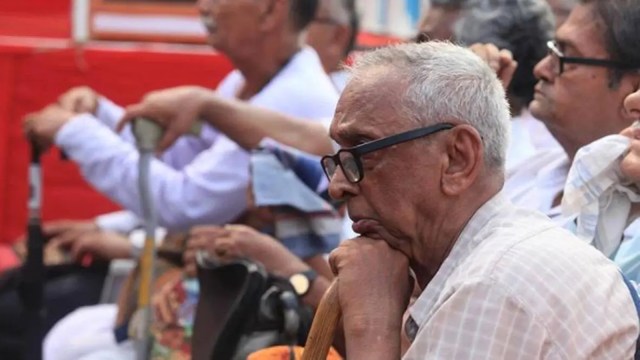
Lost in the din about India’s demographic dividend is the silently rising population of older people in the country. The number of persons above 60 years is set to more than double from 100 million in 2011 to 230 million in 2036, making up nearly 15 per cent of the total population. This is projected to further rise to 319 million by 2050, nearly one-fifth of the total population.
Declining fertility rates and increasing life span are driving this transition. The average household size in India has reduced from 5.94 in 2011 to 3.54 in 2021. Households with smaller families and a growing number of older people, who may suffer from chronic illnesses, call for a reset of the health and social care system. Care for seniors at home is a growing concern as it oscillates between social care and health care, often blurring lines between the two. The changing family structure is paving the way for external assistance in caring for older people at home.
The scope of services provided at home has expanded from assistance with activities of daily living to routine nursing care as well as specialised care. According to a NITI Aayog report, healthcare offered at home can replace up to 65 per cent of unnecessary hospital visits and reduce hospital costs by 20 per cent.
However, care practices at home are not well-defined and standardised. Caregivers who are well-trained and possess an empathetic outlook are in short supply, and often complain of being mistreated by families. There are no specific grievance redressal mechanisms for either the users or the caregivers. Furthermore, the cost of hiring a caregiver at home is substantial. Currently, it is the private, for-profit sector that offers the bulk of these services. Market estimates project the home-based care industry to grow at a rate of 15-19 per cent annually, from nearly USD 6-7 billion in 2021 to USD 21 billion by 2027.
To better organise care at home, a few policy interventions are needed. First and foremost, recognise “home” as a place for providing care and as a “place of work” for caregivers. This has implications for the rights and safety of both users and providers. The Insurance Regulatory and Development Authority of India (IRDAI) recognises hospitalisation at home in certain conditions.
Secondly, care at home is a different proposition than in an institution like a hospital or an old-age home. The terms of engagement and treatment protocols must be tailored to the home environment.
Thirdly, to meet the growing demand for trained caregivers, streamline their vocational training, nomenclature, roles, and career progression. Finally, all this ought to be brought together under a comprehensive policy on home-based care, incorporating aspects such as a registry of providers of such services; ensuring transparency and accountability; establishing grievance redressal mechanisms; and insurance coverage, among others.
The policy should also take cognisance of the fact that women, in India, on average outlive men by three years. The sex ratio of older people is projected to increase to 1060 by 2026. Since women in India are usually younger than their husbands, they often spend their later years as widows. Therefore, the policy should particularly cater to the more vulnerable and dependent older single women so that they can live respectable and independent lives.
The Ministry of Health and Family Welfare (MoHFW), Ministry of Social Justice and Empowerment (MSJE) and Ministry of Skill Development and Entrepreneurship (MSDE) have a pivotal role to play in the matter. Greater collaboration between them could get the ball rolling on the required reforms. The Maintenance and Welfare of Parents and Senior Citizens (Amendment) Bill, 2019, seeks to regulate home-based care for older people. It proposes the registration of institutions providing home care services and prescribing minimum standards for them. However, it has not been passed since being introduced in Parliament in 2019.
While the emphasis on making India’s youth population “future ready” is welcome, it should not overshadow an equally critical group that needs attention. The experience of countries like Japan shows that systems to care for older people are essential for the younger population to contribute to the country’s economy. Besides, it is a society’s moral and ethical responsibility to care for its people beyond their prime, reciprocating their lifetime of physical, social, emotional, and economic investment in the society.
The writer is specialist, Health Systems Governance, Health Systems Transformation Platform


